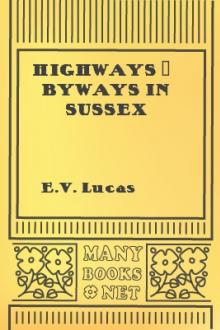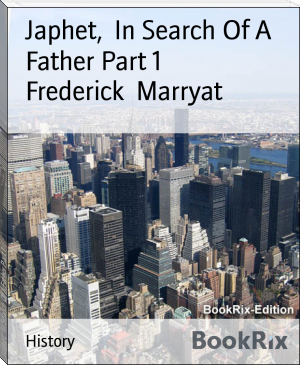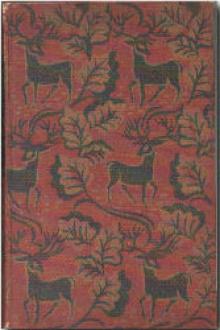Highways & Byways in Sussex by E. V. Lucas (e reader pdf best .txt) 📕

- Author: E. V. Lucas
- Performer: -
Book online «Highways & Byways in Sussex by E. V. Lucas (e reader pdf best .txt) 📕». Author E. V. Lucas
In 1671.—"I bargained with Edward Waters that he should have 18s. in money for the trimming of mee by the year, and deducting 1s. 6d. for his tythes."
23rd April, 1660.—"This being King Charles II. coronation I gave my namesake Moore's daughter then marryed 10s. and the fiddlers 6d.
"I payed the Widow Potter of Hoadleigh for knitting mee one payr of worsted stockings 2s. 6d.; for spinning 2 lb of wool 14d., and for carding it 2d.
"To the collections made at 3 several sacraments I gave 3 several sixpences."
12th May, 1673.—"I went to London, spending there, going and coming, as alibi apparet in particularibus, 13s. 8d.; I bought for Ann Brett a gold ring, this being the posy, 'When this you see, remember mee,' and at the same time I bought Patrick's Pilgrim, 5s.; The Reasonableness of Scripture, by Sir Chas. Wolseley, 2s. 6d.; and a Comedy called Epsom Wells."
Mr. Moore, having suffered in his tithes, left the following "necessary caution" for his successor:—"Never compound with any parishioner till you have first viewed theire lande and seen what corne they have upon it that yeare, and may have the next."
The next station on this quiet little cross-country line to Lewes, is Sheffield Park, the seat of Lord Sheffield. The present peer, one of the patrons of modern Sussex cricket, took a famous team to Australia in 1891-2, and it was on his yacht that in 1894 cricket was played in the Ice Fiord at Spitzbergen under the midnight sun, when Alfred Shaw captured forty wickets in less than three-quarters of an hour. Australian teams visiting England used to open their season with a match at Sheffield Park, which contains one of the best private grounds in the country; but the old custom has, I fancy, lapsed. In the long winter of 1890-1 several cricket matches on the ice were played on one of the lakes in the park, with well-known Sussex players on both sides.
Sheffield Park is associated in literature with the name of Edward Gibbon, the historian, who spent much time there in the company of his friend, John Baker Holroyd, the first earl. Gibbon's remains lie in Fletching church, close by. There also lies Peter Dynot, a glover of Fletching, who assisted Jack Cade, the Sussex rebel, whom we meet later, in 1450; while (more history) it was in the woods around Fletching church that Simon de Montfort encamped before he climbed the hills, as we are about to see, and fought and won the Battle of Lewes, in 1264.
The line passes next between Newick, on the east, and Chailey on the west. Fate seems to have decided that these villages shall always be bracketed in men's minds, like Beaumont and Fletcher, or Winchelsea and Rye: one certainly more often hears of "Newick and Chailey" than of either separately. Chailey has a wide breezy common from which the line of Downs between Ditchling Beacon and Lewes can be seen perhaps to their best advantage. Immediately to the south, and just to the west of Blackcap, the hill with a crest of trees, is Plumpton Plain, six hundred feet high, where the Barons formed their ranks to meet the third Harry in the Battle of Lewes, the actual fighting being on Mount Harry, the hill on Blackcap's east. A cross to mark the struggle, cut into the turf of the Plain, is still occasionally visible. More noticeable is the "V" in spruce firs planted on the escarpment to commemorate the Jubilee of 1887.
Plumpton, which is now known chiefly for its steeplechases, has had in its day at least two interesting inhabitants. One was John Dudeney, shepherd, mathematician, and schoolmaster, born here in 1782, who, as a youth, when tending his sheep on Newmarket Hill, dug a study and library in the chalk, and there kept his books and papers. He taught himself mathematics and languages, even Hebrew, and ultimately became a schoolmaster at Lewes. In his thorough adherence to learning Dudeney was the completest contrast to John Kimber of Chailey, a wealthy farmer with a consuming but unintelligent love of books, who was once, says Horsfield, seen bringing home Macklin's Bible, a costly work in six volumes in a sack laid across the back of a cart horse. According to the excellent habit of the old Sussex farmers, Mr. Kimber's body was borne to the grave in one of his wagons, drawn by his best team.
Plumpton Place once had a moat, in which, legend has it, the first carp swam that came into England. The house then belonged to Leonard Mascall, whom Fuller in the Worthies erroneously ascribes to Plumsted. In Fuller's own words, which no one could better: "Leonard Mascall, of Plumsted in this county, being much delighted in Gardening, man's Original vocation, was the first who brought over into England, from beyond the seas, Carps and Pippins; the one, well-cook'd, delicious, the other cordial and restorative. For the proof hereof, we have his own word and witness; and did it, it seems, about the Fifth year of the reign of King Henry the Eighth, Anno Dom. 1514. The time of his death is to me unknown." The credit of introducing carps and pippins has, however, been denied to Mascall, who died in 1589 at Farnham Royal in Buckinghamshire, where he was buried; but we know him beyond question to have been an ingenious experimentalist in horticulture. He wrote and translated several books, among them a treatise on the orchard by a monk of the Abbey of St. Vincent in France: A Book of the Arte of and Manner howe to plant and graffe all sortes of trees, howe to set stones, and sowe Pepines to make wylde trees to graffe on, 1572. I take a few passages from a later edition of this work:
To Colour Apples.
To have coloured Apples with what colour ye shall think good ye shall bore or slope a hole with an Auger in the biggest part of the body of the tree, unto the midst thereof, or thereabouts, and then look what colour ye will have them of. First ye shall take water and mingle your colour therewith, then stop it up again with a short pin made of the same wood or tree, then wax it round about. Ye may mingle with the said colour what spice ye list, to make them taste thereafter. Thus may ye change the colour and taste of any Apple.... This must be done before the Spring do come....
To Make Apples Fall From the Tree.
If ye put fiery coles under an Apple tree, and then cast off the powder of Brimstone therein, and the fume thereof ascend up, and touch an Apple that is wet, that Apple shall fall incontinant.
To Destroy Pismiers or Ants About a Tree.
Ye shall take of the saw-dust of Oke-wood oney, and straw that al about the tree root, and the next raine that doth come, all the Pismiers or Ants shall die there. For Earewigges, shooes stopt with hay, and hanged on the tree one night, they come all in.
For to have Rath Medlars Two Months Before Others.
For to have Medlars two months sooner than others and the one shall be better far than the other, ye shall graffe them upon a gooseberry tree, and also a franke mulberry tree, and before ye do graffe them, ye shall wet them in hay, and then graffe them.
To return to the line, for the excursion to Plumpton has taken us far from the original route, the next station to Newick and Chailey is Barcombe Mills, a watery village on the Ouse. The river valley contracts as Lewes is reached, with Malling Hill on the east and Offham Hill on the west: both taking their names from two of the quaint little hamlets by which Lewes is surrounded. It was at Mailing Deanery that the assassins of Thomas à Becket sought shelter on their flight from Canterbury. The legend records how, when they laid their armour on the Deanery table, that noble piece of furniture rose and flung the accursed accoutrements to the ground.
On Malling Hill is the residence of a Lewes lady whose charitable impulses have taken a direction not common among those who suffer for others. She receives into her stable old and overworked horses, thus ensuring for them a sleek and peaceful dotage enlivened by sugar and carrots, and marked by the kindest consideration. The pyramidal grave (as of a Saxon chief) of one of these dependants may be seen from the road.
On the Ouse above Lewes
On the Ouse above Lewes. CHAPTER XXVI LEWESThe Museum of Sussex—The riches of Lewes—Her leisure and antiquity—A plea from Idlehurst—Old Lewes disabilities—The Norman Conquest—Lewes Castle—Sussex curiosities—Lewes among her hills—The Battle of Lewes—The Cluniac Priory—Repellers of the French—A comprehender of Earthquakes—The author of The Rights of Man—A game of bowls—"Clio" Rickman and Thomas Tipper—Famous Lewes men—The Fifth of November—The Sussex martyrs.
Apart from the circumstance that the curiosities collected by the county's Archæological Society are preserved in the castle, Lewes is the museum of Sussex; for she has managed to compress into small compass more objects of antiquarian interest than any town I know. Chichester, which is compact enough, sprawls by comparison.
The traveller arriving by train no sooner alights from his carriage than he is on the site of the kitchens of the Cluniac Priory of St. Pancras, some of the walls of which almost scrape the train on its way to Brighton. That a priory eight hundred years old must be disturbed before a railway station can be built is a melancholy circumstance; but in the present case the vandalism had its compensation in the discovery by the excavating navvies of the coffins of William de Warenne and his wife Gundrada (the Conqueror's daughter), the founders of the priory, which otherwise would probably have been lost evermore.
The castle, which dominates the oldest part of the town, is but a few minutes' stiff climb from the station; Lewes's several ancient churches are within hailing distance of each other; the field of her battle, where Simon de Montfort defeated Henry III., is in view from her north-west slopes; while the new martyrs' memorial on the turf above the precipitous escarpment of the Cliffe (once the scene of a fatal avalanche) reminds one of what horrors were possible in the name of religion in these streets less than four hundred years ago.
Here are riches enough; yet Lewes adds to such mementoes of an historic past two gaols—one civil and one naval—a racecourse, and a river, and she is an assize town to boot. Once, indeed, Lewes was still better off, for she had a theatre, which for some years was under the management of Jack Palmer, of whom Charles Lamb wrote with such gusto. Added to these possessions, she has, in Keere Street, the narrowest and steepest thoroughfare down which a king (George IV.) ever drove a coach and four, and a row of comfortable and serene residences (on the way to St. Ann's) more luxuriantly and beautifully covered with leaves than any I ever saw. (Much of Lewes in September is scarlet with Virginia creeper.)
High Street, Southover
High Street, Southover.Although less than half an hour from Brighton by train, and an hour by road, Lewes is yet a full quarter of a century behind it. She would do well jealously to maintain this interval. Lewes was old and grey before Brighton was thought of (indeed, it was, as we have seen, a Lewes man that discovered Brighton—Dr. Russell, who lies in his grave in South Malling church); let her cling to her seniority. As





Comments (0)